ScreenFonts: Thor, Last Night, Bridesmaids, Pirates of the Caribbean: On Stranger Tides, Midnight In Paris, Kung Fu Panda 2

For a few days after TYPO Berlin 2011 "Shift" I was still riding on a high from finally having been able to bring ScreenFonts live at TYPO Berlin 2011 "Shift". I think it went down really well, and judging from the reactions both live and on Twitter people seem to have enjoyed it. Of course there are some bits 'n' bobs that can be improved – aren't there always?– but generally speaking this could work as a recurring talk, focussing on different aspects of movie poster design. A couple of people came up to me with information that could help me fill in some blind spots in my research, and others had useful suggestions on what to add to the presentation to further expand it. All this makes me so sad that there's no way I can make it to TypeCon2011 "Surge" in New Orleans in July to present this talk. It's been so long I have seen some of my American friends and acquaintances, and I was dying to meet in the flesh new people I met online. Unfortunately economics and family life make this trip impossible.
I was hoping to be able to present a spiffy – and slightly shifted in the publishing schedule, pardon the pun ; ) – new instalment to new readers discovering the ScreenFonts series on The FontFeed after having seen my presentation. Alas this episode is not as exciting as I'd hoped for, because we have to make do with what movie theatres are offering this month.
Thor. Movie poster. Fantasy blockbuster. Floating heads. Trajan (sort of). Bored.
Something Borrowed. Movie poster. Romantic comedy. Actors' portraits and colourful boxes. Linotype Didot and ITC Avant Garde Gothic. Please wake me up when this is over.
Jumping the Broom. Movie poster. Comedy. Silly ensemble cast shot. Big red blue Futura Condensed Extra Bold. Anyone see a cement truck I can throw myself under?
Borrowing a technique somewhat similar to the one used in last December's excellent Rabbit Hole movie poster, Last Night also plays with a fragmented image. Although it is used in a less sophisticated way, the resulting poster is just as effective in getting the concept of the movie across – the married couple in the middle full colour part of the image each are romantically involved with the persons in the outside black-and-white parts. Having these outer parts in vertical strips with varying density makes the image transition more interesting and adds a level of sophistication to the poster.
Unfortunately for many art directors and designers "sophisticated" and "intellectual" still spell the same old boring Helvetica (see also my commentary on the choice of type for the aforementioned Rabbit Hole poster). I know it's not the default typeface in movie poster design – Trajan still is – but it seems like a desperate cry, begging "Please take me seriously!" The exact same effect can be achieved with another extra light sans, but that would at least bring a subtly different atmosphere and some very welcome typographic diversity. Like I mentioned in my presentation at TYPO Berlin this kind of type treatment is a shameless admission that it wants to win a prize at an indie film festival. I do have to admit the non-centred setting benefits the overall design.
Another film falling for the Helvetica deceit is Passion Play. Here the movie poster tries to trick people into believing it is not the run-off-the-mill formulaic product. Yes, the poster is stylishly black with the silhouette of a red feather poking through the counter of the "O" in the movie title. Yes, said title is set in two different weights of Helvetica, one even more anorexic than the other (see the movie poster for Gone Baby Gone for a more convincing and conceptually sound example with Basic Commercial / Standard).
But let's be honest – however cleverly framed those are floating heads, those are the names of the actors centred and in all-caps at the top of the poster, and that is a centred movie title. Seriously, who're you trying to fool?
A release that sure doesn't try to fool anyone is Hobo With A Shotgun. This grindhouse-style exploitation flick harkens back to both the vigilante films of the 70s/80s and the future gang punk films of the 80s. It is the second of the spoof trailers preceding Quentin Tarantino's and Roberto Rodriguez Grindhouse double bill Death Proof and Planet Terror to be made into an actual movie – the first one being Machete. The film revels in its sarcastic violence, and this shows in the movie poster which is convincingly made to look like a vintage poster found in an attic somewhere – yellowed, stained and with fold creases.
Designer/illustrator Tom Hodge is specialised in hand painted and illustrated work that aims to bring back the lost magic of the video cover and poster art. On his blog Hodge describes how excited he was about this movie ever since he saw the mock trailer. After Hodge posted a message on the Hobo With a Shotgun website, director Jason Eisener replied, saying he was extremely impressed by his work and would love to see what Hodge could do with his film. You can read the whole story here.
Like I said in my review of the Machete movie poster in last September's ScreenFonts, I am not sure if I am still as wild about these ironic posters as I used to be. This is one of the more literal interpretations of the genre which is saved by the very personal illustration style. Although we might associate the extra bold stressed display sans Koloss with 80s commercial typography, it actually is a genuine Art Deco design by Jakob Erbar, originally published in 1924. I personally prefer this less contrasty design over other Broadway-inspired faces. Its chunky character shapes are perfectly suited for the bold treatment with a striking yellow outline and three-dimensional effect. Of all the digitisations offered by FontShop only the Castle Type version has blunt corners.
: : U P D A T E : :

Shortly after publishing this post the always reliable Christian Annyas of the slightly fantastic resource The Movie Stills Collection pointed out that the original logo for Hobo With A Shotgun had already been designed in 2008 for the mock trailer, by James White of Signalnoise Studio. White gives a bit of back story in his blog post.
I was asked by director Jason Eisener to come up with a logo for "this thing he was making for the SXSW Grindhouse trailer competition" back in 2008. He sent me a cut of the first Hobo trailer and I cracked up at its content, awesome cuts and obvious homage to independent action flicks of the 80s. I had very little time, so I put together this logo for him which they liked so much they kept for the theatrical release.
There's a fine line between funny and stupid. Ensemble cast shots for comedies can go either way, and fortunately the movie poster for Bridesmaids stays on the right side of the divide. There's something about the ballsy, in-your-face defiance expressed by the actresses that makes them instantly likeable, especially in combination with the bright pink bridesmaid dresses. The photo conveys the right attitude for an R-rated comedy and hints at what the viewers can expect from it. There's one element that intrigues me though – I know that everything is supposed to be bigger and wider and so on in the USA, but those are really huge bricks.
In my research on Trajan in movie posters I noticed that H&FJ Gotham follows the same trajectory but at an accelerated speed. Although it only started appearing in movie posters in 2006 the typeface can already be seen used for comedies and third-rate dramas. Next stop horror and gore?
Hesher has a suite of unconventional movie posters, and I have no way of finding out which one was designed for what purpose. I think it's pretty safe to assume the black version with Joseph Gordon-Levitt's portrait in the top right hand corner is the main poster. The pencil drawing of Hesher's hand holding a mouse refers to Gordon-Levitt's "long-haired, havoc-wreaking stranger" telling a story about a mouse being fed to a snake, while the burnt silhouette in the third version references the character setting fire to assorted stuff. Attentive readers will have noticed that – just like Hobo With A Shotgun – the two designs in the top row suffer from the "folded poster" syndrome, which is gradually turning into a cheap gimmick in my not-so-humble opinion.
Incidentally these posters are nice examples of the power of logos and type as branding. The face used for the movie title is a fan font based on the original Death Magnetic. It is immediately recognisable, setting the tone for Gordon-Lewitt's character and reflecting that the movie uses Metallica music in its soundtrack.
I am afraid the better part of the general audience will be confused about the movie poster for Everything Must Go. It has a typical comic actor in a non-comic image on a poster with big red text (the cliché type treatment for comedies; here Futura Extra Bold) for what seems to mostly be a drama. Talk about mixed messages, and the design is not even very good. Forgettable.
Argh, my eyes! Someone's obviously gone all Photoshop-crazy retouching Aimee Garcia's photograph on the Go for It! movie poster. That ghost-like face peeking from underneath the hoodie! That hazy, blurred-to-death tummy! She is supposed to be dancing and dynamic and all, but frankly they've made her look like a plastic action figure frozen in mid-air. The identical shapes for both O's make me think the comic book lettering-style capitals are probably a digital font which was then custom-splattered.
In spite of the presence of floating heads hovering over the scene, I quite like the movie poster for Chinese war drama Nanjing! Nanjing! (City of Life and Death) recounting the Rape of Nanking in 1937. Just like Schindler's List* for example the movie was shot entirely in black-and-white to emphasise the reality of wars, so it is fitting the poster uses that same device. The gritty image successfully conveys the atrocity and despair expressed in the film. It is mirrored in the forceful calligraphy used for the original Chinese title reversed white out of a dark area in the image, as well as the blood red distressed sans serif in the industrial and urban decay genre used for the translation. As far as conventional film posters go, this one is quite powerful.
(*) Yeah, yeah, I am aware of the girl in the red dress; I know my classic movies. ; )
Another conventional movie poster is the one for Pirates of the Caribbean: On Stranger Tides, but that's hardly surprising for a Disney ride turned movie series turned powerful franchise. The custom designed film logo still works very well. There are a number of pirate-y fonts available in the same genre, which I am now gathering once and for all in a handy FontList. Avast, me hearties! Arrr…
As so many movies and their posters continuously recycle ideas, I will now unashamedly copy-paste a text of my own:
It is common knowledge in type geek circles that for almost 30 years now Woody Allen has invariably used the same type treatment for the credit title sequences of his movies – simple white text set in Windsor on a black background. But it's not often his typeface of choice also appears on the movie poster. After 2009's Whatever Works, the movie poster for Midnight in Paris is only the second time this occurs.
As Randy J. Hunt at some point wrote:
I'm currently taking a typeface design course with Ed Benguiat, and just last night he described a time when he would have breakfast at the same New Jersey diner every morning. Among the other that would dine there was Woody Allen. On one occasion, referring to Benguiat as a "printer," Allen asked him what a good typeface was. Benguiat had an affinity for Windsor and suggested it to him that morning. He's used it in every film since.
: : U P D A T E : :
In the comments below Dan linked me to the 'canonical' version of the article about Windsor in Woody Allen's movies. Thank you very much, Dan, I owe you one. : )
I am a bit torn about the actual image on the movie poster. I see what they were trying to do: morphing a still from the movie into Vincent Van Gogh's Starry Night. Yet the execution is quite clumsy, and ruins the effect they were after.
Often when a sequel is released I like to compare its collaterals with the designs for the original (or preceding) movie(s) – see for example my examinations of The Fast And The Furious franchise. Here's what I wrote on Unzipped about the original Kung Fu Panda poster:
While it may not be the most original design, the poster for Kung Fu Panda simply oozes joyfulness. Po's heroic pose and the classic sun ray motif are wittily offset against the mischievous smirk on the panda's face. The 3D treatment of the movie title mimics the typical graphic style of classic martial arts movies.
Unfortunately that recognisable typographic style is abandoned in the main poster for Kung Fu Panda 2, which resorts to a lone – ornately textured – number two. Fair enough, the panda has become sufficiently iconic. There is no real need to spell out the full title anymore, but I think this makes the design lose a bit of its original charm. Even worse, the dreaded big red text insidiously crept into one of the teaser posters.
Because I didn't want to leave any new readers feeling let-down by the not-so-fantastic selection of posters this month, I decided to add this localised Chinese poster for your daily dose of cute. Baby panda FTW! ; )


















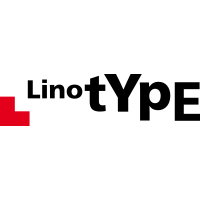
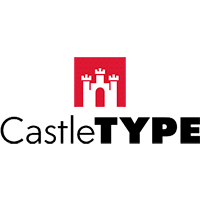




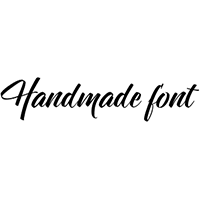


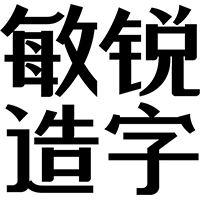
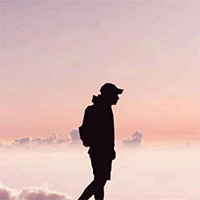

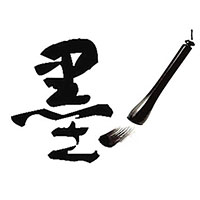





 闽公网安备35010202000240号
闽公网安备35010202000240号